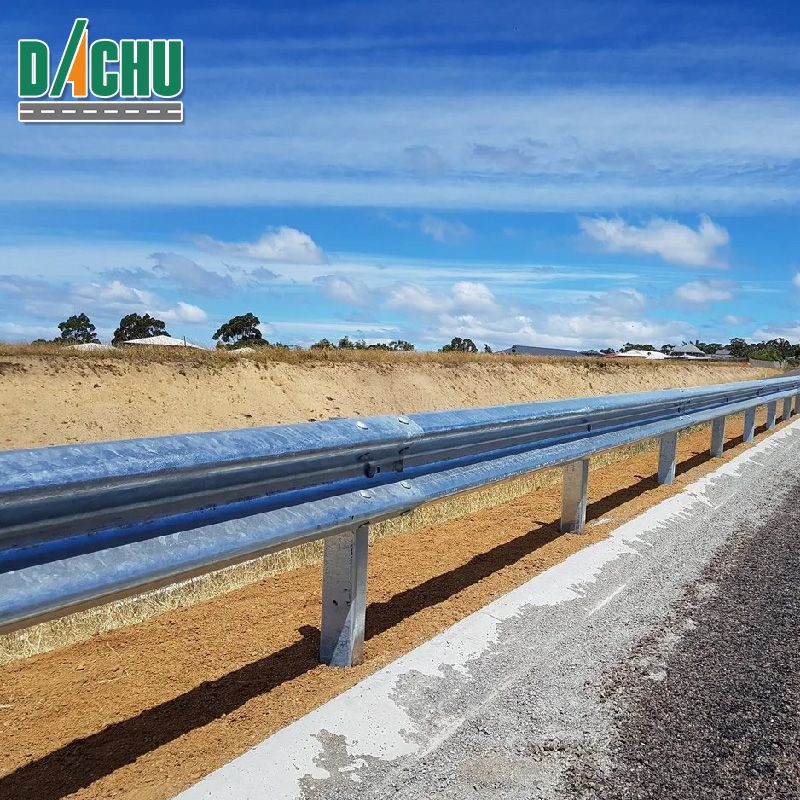Steel road safety barriers are an indispensable aspect of road infrastructure, providing vital protection to motorists and pedestrians alike. Understanding their significance, installation, and maintenance is crucial for ensuring road safety and preventing accidents. In this comprehensive guide, we delve into everything you need to know about steel guardrails road safety barriers.

Road safety is a paramount concern for transportation authorities worldwide. Among the various safety measures implemented, steel guardrails road safety barriers stand out for their effectiveness in preventing accidents and minimizing the severity of collisions. These barriers, made from durable steel materials, are strategically installed along roads, highways, and bridges to mitigate the risk of vehicles veering off the road or crossing into oncoming traffic.
Steel guardrails barrier serve as a protective barrier between vehicles and potential hazards, such as steep embankments, obstacles, or opposing traffic lanes. Their sturdy construction and ability to absorb impact energy make them indispensable elements of modern road infrastructure. In the following sections, we explore the intricacies of steel guardrails, including their design, installation process, maintenance requirements, and the benefits they offer in enhancing road safety.
Steel guardrails typically consist of several components, including:
Posts: Vertical supports that anchor the guardrail system to the ground.
Rails: Horizontal beams that run along the length of the guardrail, absorbing impact energy.
End Terminals: Specialized components designed to absorb and redirect energy during collisions.
Fasteners: Connectors used to secure the various components together.
Steel guardrails serve multiple functions, including:
Containment: Preventing vehicles from leaving the roadway and entering potentially hazardous areas.
Redirection: Redirecting errant vehicles back onto the road, minimizing the risk of head-on collisions.
Absorption: Absorbing and dissipating the kinetic energy of colliding vehicles, reducing the severity of impact forces.
Visibility Enhancement: Increasing the visibility of roadway edges and potential hazards, especially during adverse weather conditions or low light.
Before installing steel guardrails, thorough site assessment and planning are essential. Factors such as roadway geometry, traffic volume, speed limits, and potential hazards must be carefully evaluated to determine the optimal placement of guardrail systems.
Proper foundation preparation is critical for the stability and effectiveness of steel guardrails. This involves excavating the soil, compacting the subgrade, and installing concrete footings or steel posts to securely anchor the guardrail system.
Once the foundation is prepared, the components of the guardrail system are assembled and installed according to manufacturer specifications and engineering guidelines. This includes positioning posts at specified intervals, connecting rails and end terminals, and ensuring proper alignment and tensioning of the system.
Routine inspections are vital for identifying potential issues such as damage, corrosion, or loose fasteners that could compromise the effectiveness of steel guardrails. Inspections should be conducted by qualified personnel and follow established inspection protocols.
Prompt repair or replacement of damaged or deteriorated components is essential for maintaining the structural integrity of steel guardrails. Any signs of damage or wear should be addressed promptly to prevent safety hazards and ensure continuous protection for road users.
Steel guardrails are susceptible to corrosion, especially in areas with high humidity or exposure to deicing chemicals. Applying protective coatings or galvanizing the steel components can significantly extend their service life and reduce maintenance requirements.
Steel guardrails offer numerous advantages, including:
High Durability: Steel guardrails are resistant to corrosion, weathering, and impact damage, ensuring long-term durability and reliability.
Cost-Effectiveness: Despite their initial installation cost, steel guardrails offer a high return on investment due to minimal maintenance requirements and extended service life.
Versatility: Steel guardrails can be adapted to various roadway configurations and environmental conditions, making them suitable for a wide range of applications.
Proven Effectiveness: Numerous studies have demonstrated the effectiveness of steel guardrails in reducing the severity of accidents and saving lives on the road.
Steel guardrails road safety barriers play a vital role in enhancing road safety, protecting lives, and minimizing the severity of accidents. Their robust construction, versatility, and proven effectiveness make them indispensable elements of modern road infrastructure. By understanding the design, installation, and maintenance of steel guardrails, transportation authorities can ensure safer roadways for all users.
Previous: How Far is the Spacing of Guardrail Posts?
Next: What are the specifications for installing geogrid in retaining walls?
Copyright:@2020-2021
Comments Please sign in or sign up to post.
0
0 of 500 characters used